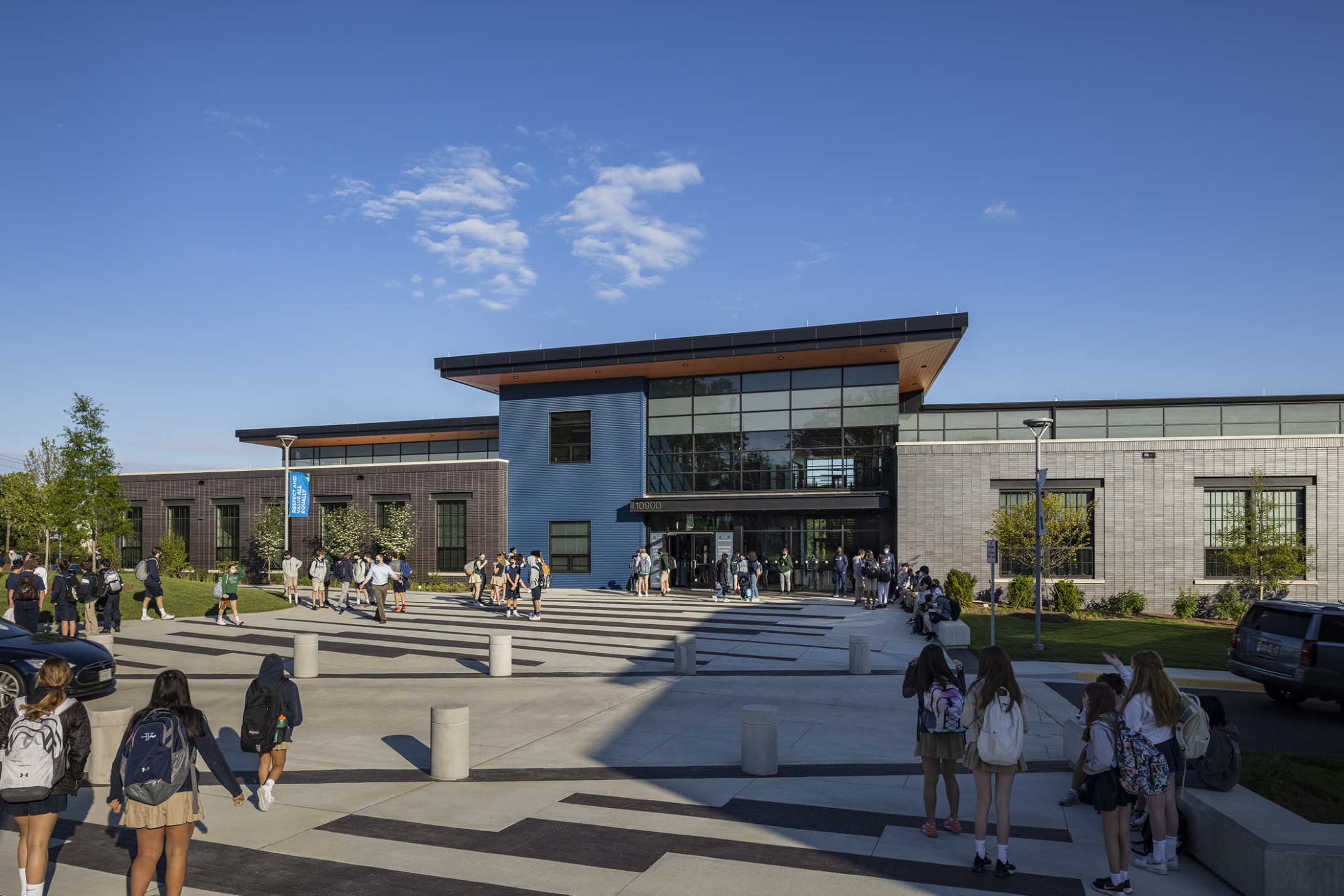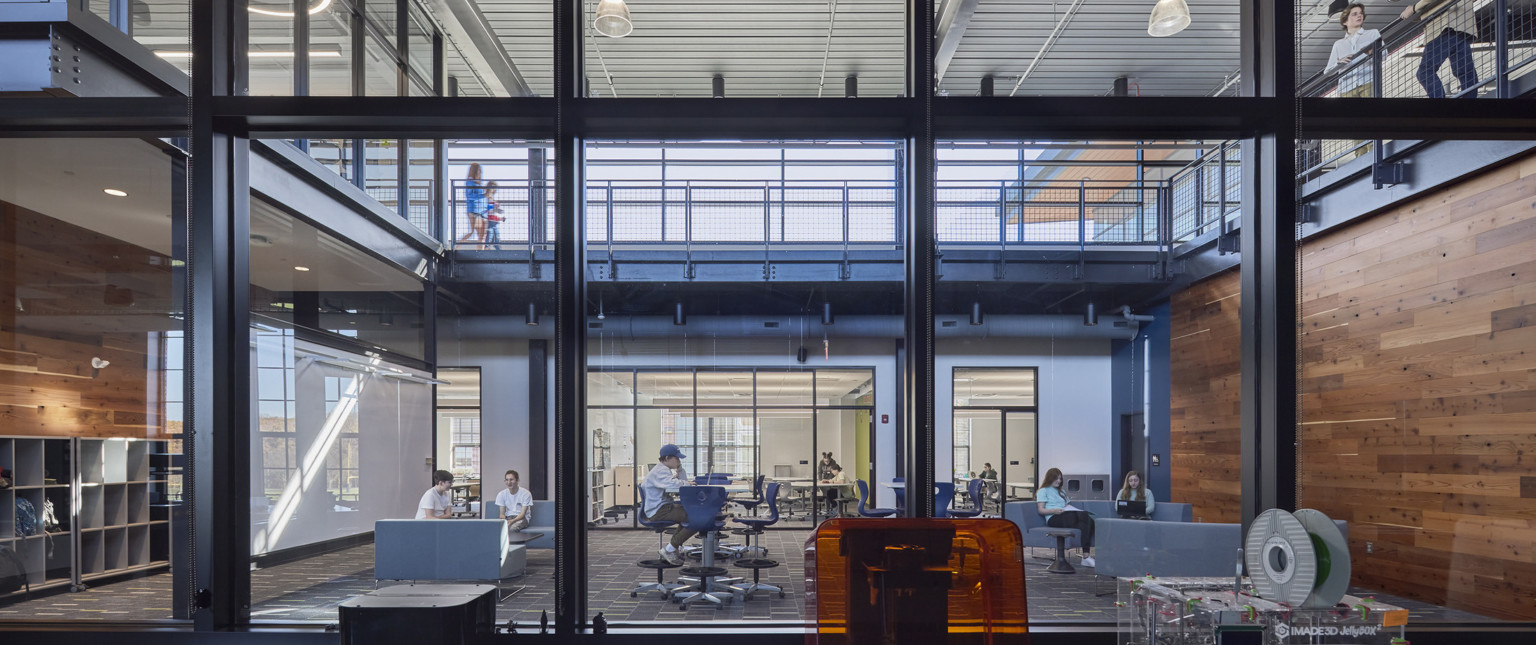A significant increase in enrollment prompted the need for change at Flint Hill School, a progressive independent school serving over 1,000 students in grades K-12. Located in Oakton, Virginia, it was originally comprised of two buildings: one for the lower and middle-grade levels and one for the upper-grade level. But to better serve its growing student population, FHS opted to build the new Peterson Middle School to separate the two grade levels and to take advantage of shared athletic and performing arts facilities on the upper-grade level campus.
The team led numerous programming sessions to create a comprehensive master plan. The result set the vision for the school – an inspiring environment that encourages critical thinking where students can develop and apply their skills and knowledge in a workshop environment. Applying this was critical to develop a solution that embodies the school’s progressive teaching programs that focus on creativity and experimentation.
Dark stack bond brick, exposed concrete, structural steel, and corrugated metal windows create an industrial appearance where gadgets, devices, and mechanisms are conceived, designed, and fabricated in a single environment. The building incorporates structural, mechanical, electrical, and plumbing systems exposed to expand awareness and learning through transparency and natural materials. Classrooms, labs, and project areas open to one other and can expand, or contract as needed, allowing for the free flow of students and faculty from classroom to project areas to innovation and science labs. An innovation center provides areas for exploring and making to support the school’s critical thinking curriculum.
The design also features a learning commons with small group study rooms and a large glass two-story commons space that serves as a visual beacon for the neighborhood and school. To emphasize this further, the building’s public areas are highly transparent to the outside, raising curiosity to discover the activities inside. A large terrace extends the length of the building and steps down to the playing fields, creating a natural grandstand for sporting events. DLR Group provided planning, architecture, and engineering design services for this project.



